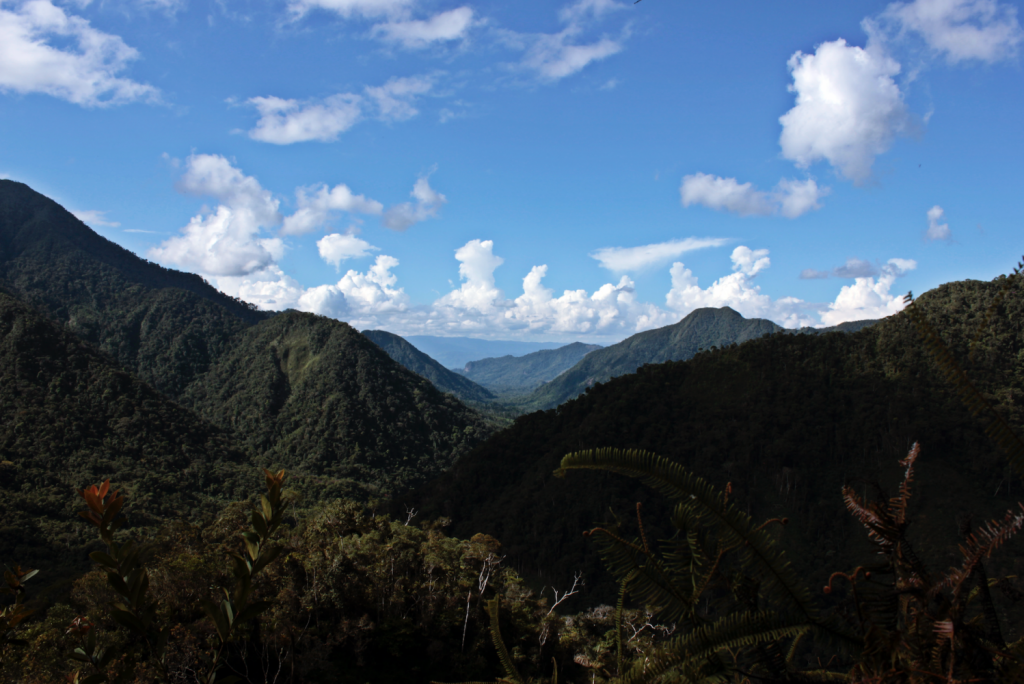Our final feathered feature doesn’t disappoint…
12/21/2018
Our final Year of the Bird doesn’t disappoint. We dedicate December to the spectacularly bizarre Andean cock-of-the-rock.
This year, Nature and Culture joined nature lovers around the world to celebrate Year of the Bird. To commemorate the wonder of our feathered friends, and raise awareness about the crucial role birds play in caring for our planet, we featured unique birds found in our project areas. We celebrated the largest parrot in the world, waddling creatures from Peru, a newly-discovered hummingbird species and more!
As Year of the Bird comes to a close, we dedicate December to a spectacularly bizarre bird found in almost every country that we work in. Sporting a fan-shaped crest, bright orange plumage and black wings, the Andean cock-of-the-rock (Rupicola peruvianus) is one of the most iconic birds of the Andes Mountains.
Native to the Andean cloud forests of South America, the Andean cock-of-the-rock ranges from Venezuela to Bolivia, and is recognized as the national bird of Peru. It typically inhabits the lower and middle forest levels, but can be found foraging in the canopy for fruit. Generally shy, the species avoids contact with humans.
The birds are easiest to see when gathering for their impressive courtship display. When it comes time to mate, male cocks-of-the-rock gather at a lek (a communal display ground) and compete as females look on. The males show off their bright plumage and make loud calls while “dancing” and jumping. The best “dancer” gets his pick of the females.
However, their display is all for show, as the male cock-of-the-rock is a negligent father. Only the females are involved in nest-building, incubation and raising their young. The female’s subtle coloration – brown feathers and a smaller crest – allows her to conceal herself and her nest from threats.
This peculiar species plays a key role in a healthy, well-balanced environment, consuming fruit and promoting forest growth through seed dispersal. Though populations are believed to be stable, droughts and destruction of their forest homes have threatened the future of the cock-of-the-rock. Additionally, its striking appearance has led to significant levels of capture for the international pet trade.
Build a better world for all birds by supporting Nature and Culture. Make 2X the impact through December 31!
 Located in North-Central Peru, Boshumi lies in the transitional zone between Peru’s puna grasslands and montane forest.
Located in North-Central Peru, Boshumi lies in the transitional zone between Peru’s puna grasslands and montane forest.
Nature and Culture has been working in South America’s Andean cloud forest for over twenty years, protecting the home of the Andean cock-of-the-rock and many other unique and threatened species. Just last week, we established a new Regional Conservation Area in the Peruvian region of San Martín. Bosques de Shunte y Mishollo – also known as Boshumi – will permanently protect 472,973 acres in a region previously devastated by deforestation.
Located in the Peruvian Andes, Boshumi adds to a critical conservation corridor between adjacent parks and protected areas, including the 6.2-million-acre Gran Pajatén Biosphere Reserve. Boshumi protects almost 2,000 species such as the Andean cock-of-the-rock, the threatened spectacled bear and critically endangered yellow-tailed woolly monkey. Learn more about this exciting achievement on our website.
Thank you for celebrating Year of the Bird with us! As 2019 approaches, we remain committed to building a better world for all birds, but with a new monthly feature…Stay tuned!
Did you miss our last featured bird? Learn about the Brazilian merganser here.


